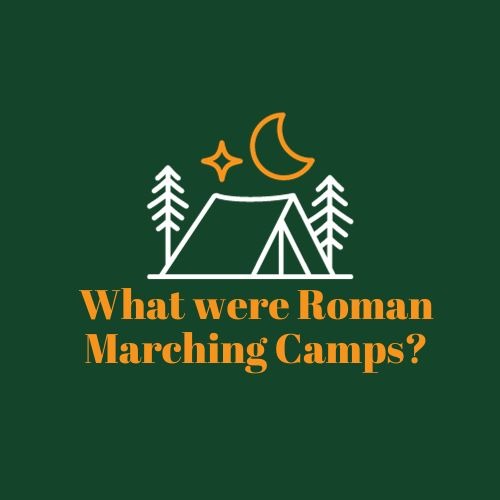One of the most iconic symbols of the Roman martial prowess is their military camp. Rome’s armies are not just made of warriors, they also include skilled and talented engineers and workforce that is able to work on construction. And it was one of the reasons why they were so successful in siege warfare. These camps enable the Roman army to build supply, network communications, and defenses which spanned the scope and length of Europe.
These camps are used frequently and they are built quickly that is why the Roman military camp was the ultimate symbol of military engineering and mass labor. In this article, we are going to find out more about Roman Marching Camps and its importance.
What Makes the Roman Marching Camp Important?
Roman armies are often situated in an unreceptive country and from the height of the Republic through the middle years of the Roman empire, the army was busy expanding the territories of Rome. Plus, they dealt with several threats and revolts that happens beyond their borders through conquest just like the Iceni uprising in 1st century AD in Britain.
That’s why in order to be safe while moving through all that hostile terrain, a portion of the Roman army built a fortified camp every day when their march ends. Before they set up the camp, they made sure it was carefully planned, constructed, and strictly follow the certain set of patterns. This planning helped the army to organize and defend their encamped forces by having each part of the army know its place within the camp. Pretty clever, isn’t it?
These well-planned positions showed their importance in 37 BC in Gaul when the Romans were attacked by Nervii and their allies while they are setting up their camp. Caesar’s men left their work, grabbed their weapons, and fought for their lives.
How Did They Set Up Camp?
The process of setting up the Roman marching camps begins when the army is still on the march. They do this by sending a survey unit of a Tribune ahead to look for the right place. The location must be big and wide enough to accommodate a 700-meter square encampment. If it’s going to be located near an enemy, the camp has to be about four kilometers away from their location, and it has to have a water source that their enemies could not divert or foul up. For a more defensive purpose, their camp has to be built on high grounds and in a location without cover for the enemy to use.
If they find the perfect location, the surveying team that the Roman army sent marks out the camp. They use a white flag to mark the position for the commander’s tent and a red flag to mark the sides of the nearest water source. They also mark out walls, camping areas, and roads through the camp.
They begin setting up their camp when the legionaries arrive. Each man is assigned to 24 meters of ditch and wall they have to prepare. And each of the soldiers has a bundle of sharpened stakes to use to make a fence. In case an enemy shows up, the soldiers are trained to keep their guard and defend the camp.
After they dig a three fit deep ditch, use the earth to build a wall, and lastly set up a fence or barricade on top, then these men are allowed to rest for the rest of the night.
What’s it Like in the Camp?
Once the camp has been set up, everybody in the army will gather together and will swear that every people in the camp will not steal and they will report anything they discover. Only then they would set up their tents for the night. A separate group is tasked to set up the tent for the commander.
While they are in camp, they appoint guards that will be assigned in different places of the camp. Some of them will guard the commander’s tent, some will guard the supplies, and some will guide the horses. In general, they are guard patrols who are keeping an eye out for any approaching troubles of enemies within the camp.
he soldiers cooked, ate, cleaned their equipment, as well as kept themselves entertained, and slept. It was a busy life in camp because of different duties such as guard patrols.
Disassembling the Camp
When morning comes, the Roman army will hear a horn blast which means it’s the start of their day. Guard patrols will submit their reports on any activities they saw during the night and the army will send out a strong cavalry to scout the surrounding area of the camp and observe what the enemy was doing.
After that, the cavalry will report of the commander to seek the advice from the council of war’s officers. They will discuss what the army will do next whether they would sit still, keep on going, or engage the enemy. While all of this happens, the rest of the soldiers sat outside their tents while eating their breakfast.
When the army hears a second horn blast, it means that it is time to pack up their camp. They will start to pack their bags and take down their tents. A third horn blast means the army will have to fall in, they will exit the camo in a set order, go on the road again and head for their next site.

